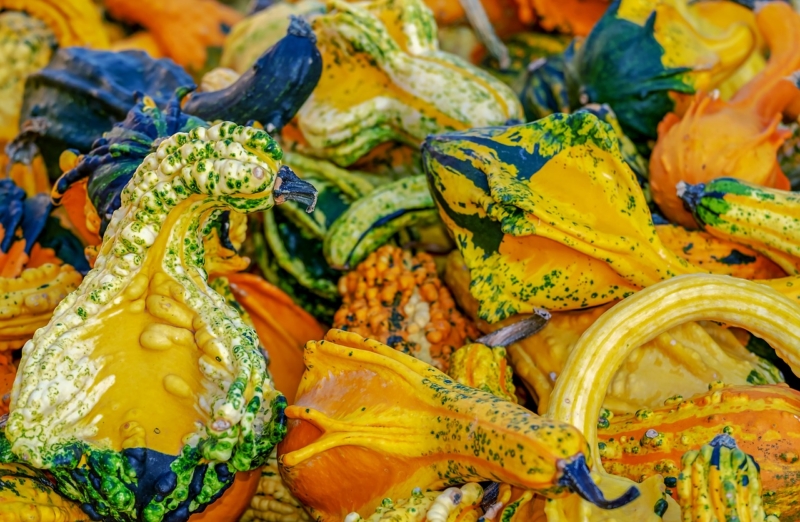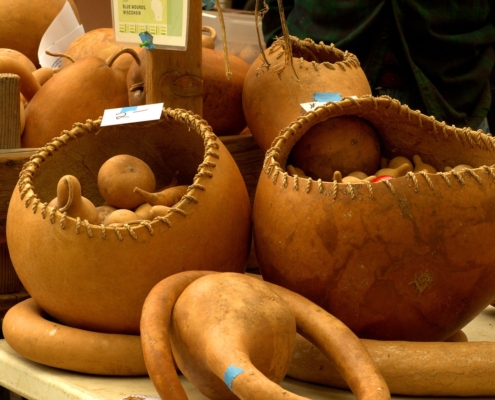All About Gourds
by Heather Stone

Photo courtesy of pixabay – Couleur
Fall is here and pumpkins and gourds can be found in abundance. From the farm stand to the local grocery store, these colorful and sometimes funny shaped fruits are part of the season. But, did you know that gourds are one of the oldest cultivated plants? Originally grown to make storage vessels and utensils, nowadays we largely use them for decoration. A member of the Cucurbit family along with cucumbers, squash and melon, gourds grow on large, vigorous vines that can be trained along fences or up trellises.
Humans around the world have utilized gourds for a very long time for a variety of purposes. Most commonly, gourds were used for storage containers, utensils, dippers and dishes. Gourds were also used for creating musical instruments such as shakers, maracas, drums and various stringed instruments resembling a banjo. Some of the earliest guitars and violins in the United States were made from gourds by African slaves.
There are three types of gourds:
- Cucurbita pepo are the colorful little ornamental gourds that make good decorations.
- Lagenaria siceraria are the hard-shelled gourds . Varieties include the Speckled swan gourds, bottle gourds, dipper gourds, birdhouse gourds and powderhorn gourds. Hard-shelled gourds have been grown for over five thousand years for use as containers, utensils and drinking vessels.
- Luffa aegyptiaca is the well-known bath sponge. When dry, the outer shell is scraped off and the inner fiber is used as a sponge.
Gourds are easy to grow and come in a wide array of colors, shapes and sizes. Sow the seeds in a sunny location after all chance of frost has passed. Gourds will grow in almost any soil and under most conditions. Ideally, train the vines up a trellis or fence to keep the fruits off the ground while ripening and drying. Most gourds reach maturity in 90-150 days. Harvest after the shells harden by cutting the fruits from the vines with 1-2 inches of stem attached. Cure them for a week in a warm, dry location with good air circulation.

photo courtesy of pixabay – mikegoad
To fully dry your gourds for crafting:
- Place gourds in a warm, dark spot.
- Regularly turn your gourds so air reaches all sides.
- When you can hear the seeds rattle inside your gourd, it is fully dry and ready for use.
- This drying period can take several weeks depending on the variety and size of the gourd.
You can create a number of things from your homegrown gourds.
Here’s the how-to for turning that birdhouse gourd into a birdhouse.
Want to make a bowl or two? Here’s a great tutorial.
Sources: http://indianagourdsociety.org/education/Gourds_In_American_History_2010.pdf
https://homeguides.sfgate.com/decorative-gourds-57941.html
https://www.almanac.com/blog/gardening/garden-journal/gourds-types-gourds-growing-gourds-curing-gourds



Leave a Reply
Want to join the discussion?Feel free to contribute!